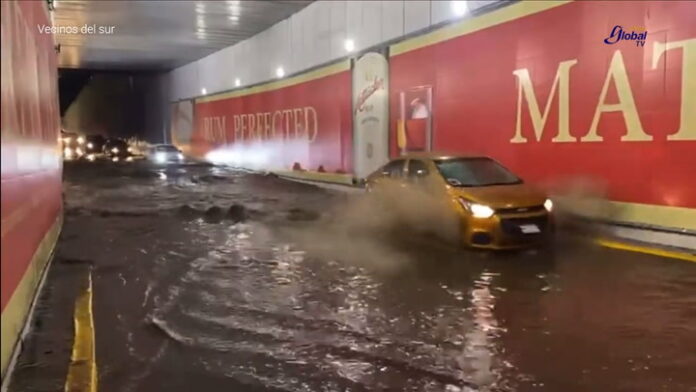The head of the Department of Atmospheric Sciences at the university explains one possible cause
Mexico City is the country’s largest urban settlement, with a population of over 9 million 209 thousand 944 inhabitants, according to data from the 2020 Population and Housing Census of the National Institute of Statistics and Geography (INEGI). And despite efforts by local authorities to improve drainage systems, they have not been able to control flooding in the capital.
Among the diagnoses on this problem is the location of CDMX within the Mexico Valley Basin, surrounded by mountains that favor the concentration of precipitation in populated areas.
The accumulation of waste in the city’s drainage system causes water stagnation mainly in avenues and viaducts, causing traffic and vehicular chaos that adds to the problem every year during rainy seasons.
New causes of flooding in CDMX
In addition to the previously mentioned diagnoses, scientists at the National Autonomous University of Mexico (UNAM) have studied 2024 climatological phenomena and are investigating whether there is a direct relationship with the increase in flooding in the capital.
David Adams from the Institute for Atmospheric Sciences and Climate Change at UNAM confirmed that this year there was an increase in rainfall across the country, and that the precipitation also concentrated more heavily in September, which increases flooding due to the accumulation of water from continuous rainfall.
“I would say it’s different, this year in particular the rains started later. Generally, by early May and late June in this region it starts raining more frequently,” shared Dr. Atmospheric Sciences for a UNAM Global TV capsule information.
On September 1, the National Water Commission (Conagua) announced that intense rains would be generated as a result of cold front number 1 and the phenomenon known as monsoon, which causes a drastic change in normal rainfall and temperature conditions.
To date this month, the Secretariat for Integral Risk Management and Civil Protection of the capital has issued five yellow alerts for flooding, two orange and two purple, confirming an increase compared to previous years on these dates.
“It’s not that they are so strong (the rains), but there is quite a lot of water. I would say what’s different now is the continuity of rainfall over the past few weeks,” added Adams.
Another possible origin of increased rainfall is “El Niño”, a climatic event generated every certain number of years by the warming of the Pacific Ocean.
Advice for protecting yourself during a flood
- During a flood, it is essential to follow these recommendations:
- – Stay informed about climate conditions and flood alerts.
- – If you live in an area prone to flooding, have an evacuation plan and ensure that your family knows what to do in case of a flood.
- – Do not drive through flooded areas. The water may be deeper than it appears and can carry your vehicle away.
- – Do not walk through flooded areas. The water may be contaminated and pose a risk to health.
- – Do not touch electrical equipment or cables if you are trapped in water or have wet hands.
- – If you are in a building, go up to a higher level and wait for the floodwaters to pass.
- – If you are in a vehicle, abandon it and seek a safe place.
Source: Infobae






